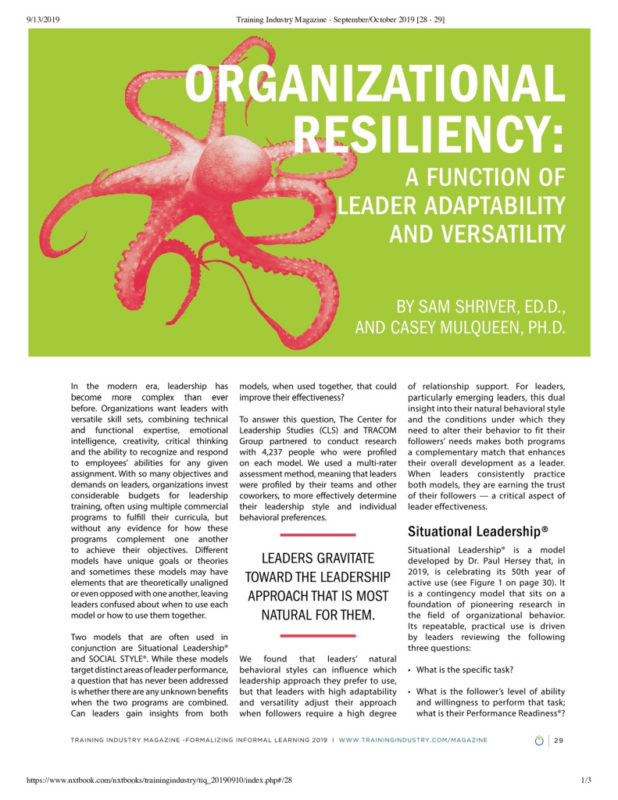In the modern era, leadership has become more complex than ever before. Organizations want leaders with versatile skill sets, combining technical and functional expertise, emotional intelligence, creativity, critical thinking, and the ability to recognize and respond to employees’ abilities for any given assignment. Two models that are often used in conjunction are Situational Leadership® and SOCIAL STYLE®.
Situational Leadership® and SOCIAL STYLE®
While these models target distinct areas of leader performance, a question that has never been addressed is whether there are any unknown benefits when the two programs are combined. Can leaders gain insights from both models, when used together, that could improve their effectiveness?
To answer this question, The Center for Leadership Studies (CLS) and TRACOM Group partnered to conduct research with 4,237 people who were profiled on each model. They used a multi–rater assessment method, meaning that leaders were profiled by their teams and other coworkers, to more effectively determine their leadership style and individual behavioral preferences.
Situational Leadership Model
Situational Leadership is a contingency model that sits on a foundation of pioneering research in the field of organizational behavior. Its repeatable, practical use is driven by leaders reviewing the following three questions:
- What is the specific task?
- What is the follower’s Performance Readiness — the level of ability and willingness to perform that task?
- What leadership style approach has the highest probability of success given the answers to the first two questions?
This model helps leaders adapt their approach regardless of the circumstances they attempt to influence.
SOCIAL STYLE Model
The SOCIAL STYLE model describes behavior along two continuums: assertiveness and responsiveness. By plotting these two independent behaviors together, the model is formed and results in four STYLES:
Each STYLE describes a person’s preferred way of communicating, making decisions and achieving work goals.
Research Findings
The study was conducted over the course of 18 months and sought to understand the relationships among:
- The four Situational Leadership styles and SOCIAL STYLES
- The four Situational Leadership styles and versatility
- The four SOCIAL STYLES and adaptability
- Adaptability and versatility
To learn the results to these findings, click the article to read more!
As featured in Training Industry, view the online versions of the article here: https://trainingindustry.com/magazine/sep-oct-2019/organizational-resiliency-a-function-of-leader-adaptability-and-versatility/
Or in the online magazine here : https://www.nxtbook.com/nxtbooks/trainingindustry/tiq_20190910/index.php#/28
The article was authored by Casey Mulqueen, Ph.D., Senior Director of Learning & Development at TRACOM, and Sam Shriver, Ed.D., Executive Vice President at Center for Leadership Studies.

 New Horizons
New Horizons
 Project Management Academy
Project Management Academy
 Six Sigma Online
Six Sigma Online
 TCM Security
TCM Security
 TRACOM
TRACOM
 Velopi
Velopi
 Watermark Learning
Watermark Learning
 Login
Login

